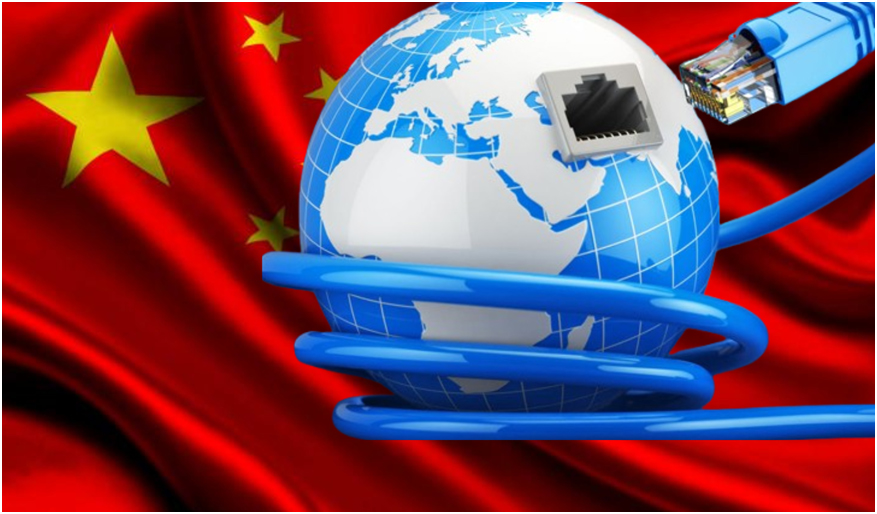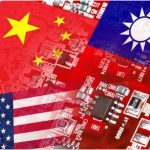The inception of Digital Silk Road
The Belt and Road Initiative which was formally launched by China in 2013 consisted of the “Silk Road Economic Belt” and “Twenty-First Century Maritime Silk Road”, was predominantly focused to address the existing gaps in infrastructure investment across regions. Physical connectivity such as roads, railways and building ports; are some of the major aspects of this mammoth infrastructure investment project. Simultaneously, the BRI has also diversified to an “Aerial Silk Road” and “Polar Silk Road”.
Yet another aspect of the BRI which was gradually adopted was the “Digital Silk Road” (DSR). It was first mentioned in the National Development and Reform Commission’s 2015 ‘Vision and Actions on Jointly Building Silk Road Economic Belt and 21st Century Maritime Silk Document”. It was first officially mentioned in China’s 13th Five-Year Plan (2016-20) and referred to as the Digital Belt and Road Programme or DABR. It aimed at increasing digital connectivity and infrastructure across the globe. It is imperative to understand that DSR is a part of BRI which seeks to establish China as a global technological superpower which will have serious implications in terms of economic, security and geopolitical interdependence. Along with DSR, China has designed other strategies such as- the Made in China 2025 Strategy, AI National Development Plan and China Standards 2025- are going to aid itself in becoming a global tech-superpowers.
The Nature of DSR
The nature and the course of DSR was shaped in an incremental and subsequent manner. It started to gain momentum in 2017 when it was officially announced as a separate component of the BRI. Furthermore in 2019, the DSR was promoted as a stand-alone initiative at the second BRI Forum and has since become a critical part of China’s foreign policy agenda.
The year is significant to note because it was when the U.S. and China became fully engulfed in the tech-war; following the U.S. crackdown on the Chinese tech giants like Huawei and ZTE. Although the crackdown on Chinese tech companies started way back in 2012 when the U.S. imposed a ban on the U.S. based companies from using Huawei equipment due to surveillance concerns. It was followed with further sanctions in 2019, which banned the transfer of technology, such as semiconductor chips to Huawei.
Given the context, it can also be deduced that through DSR, China wants to redirect its market dealing with tech products and equipment. However when we look at the rationale behind the launch of BRI- it was primarily dominated by the approach to enhance hard infrastructure investment globally. In this light, the launch of the DSR also culminated at a time when there were changes due to the Covid-19 pandemic which overshadowed the importance of “physical connectivity”. Hence the burgeoning investment in digital infrastructure will ensure seamless connectivity and security of the global supply chain.
Furthermore, the launch of DSR has come at a time when logistics and supply chain management is going through a paradigm shift towards “Fourth Industrial Revolution”.
The importance of DSR also stems from the fact that China’s BRI is focused on investing and building sea ports. Given the economic, maritime security and strategic significance of ports, building of digital infrastructure becomes imperative to support the smooth operation of ports. If the facilities such as optimizing vehicle allocation within the terminal and allocation of berths are aided by digital infrastructure; it is definitely going to ensure smooth operation of vessel traffic and minimize waiting time for ships. Hence, there is an interplay between logistics and supply chain management which is at an important crossroad.
On the other hand, there are wide areas of DSR which aim to expand connectivity both within China and internationally. At the international level, China is investing abroad in digital infrastructure, including next generation cellular networks, fiber optic cables, surveillance systems and data centres. Beijing is also promoting DSR through multilateral institutions which will help China to promote an ideal international digital environment. Furthermore, the BRI project which also facilitates DSR has been responsible for furthering Huawei and ZTE equipment into the partner-states.
Technological independence at home – Interdependence and dependence abroad
The entire system of DSR’s digital infrastructure is aided by BeiDou– China’s alternate tracking system. According to the White Paper on BRI, by 2022 Beijing had signed 17 Memorandum of Understanding (MOU) for the construction of Digital Silk Roads, e-commerce cooperation and digital economy investment are signed with 30 and 18 countries respectively.
The underlying aim of this initiative is that it seeks to create technological independence at home while creating interdependence and dependence among states with Chinese tech-infrastructure and diplomacy. Some of the significant projects which are undertaken as a part of the DSR are such as the construction of the China-Pakistan, China- Russia, China-Kyrgyzstan, China-Myanmar cross border optic fibres.
Moreover, there are involvement of both state-owned enterprises like China Telecom, China Mobile, Hikvision, Unicorn and Dahau (which is partially state-owned) and private companies like Huawei, Baidu, Hengtong, Alibaba and Tencent. It is mostly involved in exporting 5G technology, laying undersea cables and optic fibre, enabling the provision of satellite dishes, as well as providing cutting-edge technologies such as cloud computing, artificial intelligence and facial recognition software.
The concerns regarding DSR
The DSR targets digital technologies in developing countries by offering cheap alternatives to Western date systems and security. There is a push and pull factor which has worked in favour of China. The push factor is the rapid growth of China’s digital market and the issue of industrial overcapacity which has pushed Chinese tech-companies to explore overseas markets. The size of China’s digital market has surpassed 1.2 trillion yuan in 2024. The pull factor is China’s perception of the “digital gap” in developing countries that impedes the growth of the digital economy in these countries.
Despite China’s growing digital outreach through competitiveness and future innovation capabilities, there are concerns that integration of Chinese technologies through the DSR might pose a threat to states’ critical infrastructure. There are apprehensions in regard to China’s ability to harness large quantities of foreign data which is perceived to be a threat to defence industries. Since the technological integration in any country takes place at different levels, if the receiver state integrates DSR with its national tech infrastructure then it will also be a deciding factor for the U.S. government whether to restrict intelligence, defence and defence-industries ties to such states. The U.S. has already raised concerns regarding issues related to civilian and military data security. States who are in need of tech infrastructure investment could likely face a dilemma in the longer run while choosing either Chinese or the U.S. led tech infrastructure.
What can be inferred from this scenario is that states are now engulfed in “tech-diplomacy” which means that “states are not only involved in engaging with tech-companies or setting up in international tech hubs, but also inter-state diplomacy around matters of technological significance and strategic national importance mediated through large powerful technology firms and state-proxies”.
Given the complex outplay, the states have to meticulously lay and pursue its interest in this era where currently the global world order is in flux. Also, when we look at this situation from the perspective of how great powers behave, they will always sway states in accordance to their dictates which eventually leaves less space for the recipient state to pursue their strategic autonomy. It is also needless to say that critical infrastructure of states have now become the backbone of their economy, politics and security respectively. Hence states tend to seek investments from external states which can fill in the gaps in regard to digital infrastructure.
No doubt that there are risks which are associated with China’s digital infrastructure investment through DSR in regard to data security. However, the recipient states have to measure the opportunities and costs associated with cooperation with China over DSR.




